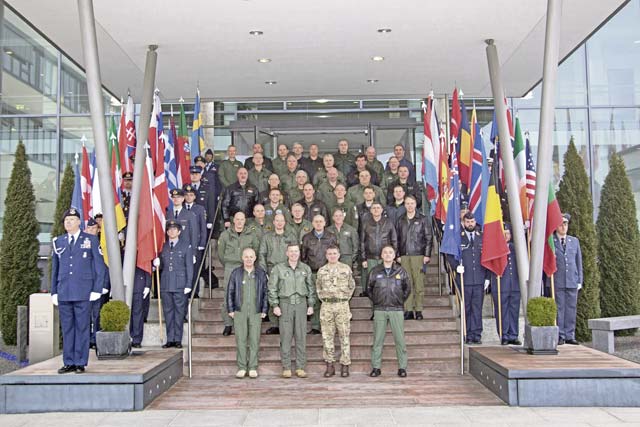
U.S. Air Force Gen. Tod D. Wolters, Allied Air Command commander, hosted the first NATO Air Chiefs’ Symposium of 2019, Feb. 12-13, bringing commanders from NATO’s air forces and other Allied Command Operations headquarters together at Allied Air Command Ramstein to discuss Air and Space Power’s contribution to enhancing deterrence and defence.
The event provided a venue for the senior representatives to exchange views and discuss opportunities to develop further cooperation in the air and space domains.
“As we enter the year of NATO’s 70th anniversary, our Alliance is stronger than ever,” said Wolters in his opening address to the symposium. “Today’s environment demands enhanced readiness and a forward-leaning posture to maintain 360-degree deterrence. Last year, we enhanced Alliance capabilities by establishing a more responsive air command and control element to deliver full-spectrum air and space power in support of NATO joint operations. This year will see a focus on continued efforts to further develop our multi-domain capabilities, including ever-vigilant capabilities in the air, space and cyber domains,” General Wolters added.
A highlight of the symposium was the key note address by Royal Air Force Gen. Sir James Everard, Supreme Allied Command Europe deputy commander, who communicated his views on the strategic context and provided insights on the NATO Readiness Initiative, including potential challenges for NATO’s air forces.
Royal Navy Vice Adm. Sir Clive Johnstone, commander of Allied Maritime Command, shared his assessment on maritime challenges in the North Atlantic and his approach to strengthening the readiness and deterrence posture.
Other topics included the key theme of 360-degree deterrence, potential adversary modernization efforts, the upcoming Alliance Ground Surveillance capability, activities of NATO Air Command-Afghanistan and emerging challenges for NATO Integrated Air and Missile defence posture across SACEUR’s area of responsibility.


